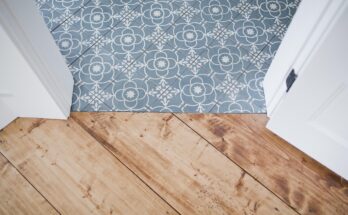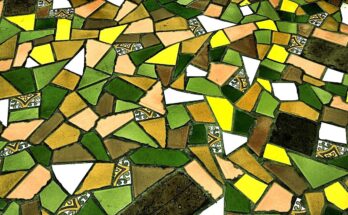ZonaJakarta – Laminate flooring has become a go-to choice for homeowners who want the look of hardwood without the hefty price tag or complicated upkeep. It’s durable, budget-friendly, and comes in styles that mimic everything from oak and walnut to tile and stone. But while laminate is known for being low maintenance, that doesn’t mean it’s no maintenance.
If you’ve recently installed laminate flooring or inherited it in your home, taking care of it properly is key to keeping it looking great for years. Luckily, it doesn’t require much—just a few smart habits, the right tools, and a bit of routine attention.
Here’s a detailed breakdown of how to maintain laminate floors without breaking a sweat (or the surface).
Keep Dust and Dirt in Check
Laminate has a wear-resistant top layer that helps it hold up to foot traffic, kids, and pets. But grit and dirt—especially tiny rocks or sand—can still cause micro-scratches over time, dulling the surface.
Your first line of defense? Regular cleaning. Sweeping or vacuuming every few days will help prevent buildup. If you use a vacuum, make sure it’s designed for hard floors or has a setting that turns off the rotating brush. Those brushes can be too harsh and may cause damage over time.
A microfiber dust mop is another great tool. It glides across the surface, collecting dust without scratching the finish. Plus, it’s lightweight and quick to use, which makes staying on top of daily messes much easier.
Mop Sparingly—and Never Soak the Floor
Here’s where a lot of people go wrong: treating laminate like tile or vinyl. Unlike those materials, laminate doesn’t mix well with water. Its core is made of compressed fiberboard, and while the top layer is water-resistant, the seams between planks are vulnerable to moisture. Too much water can seep in and cause swelling, warping, or bubbling.
That doesn’t mean you can’t mop—just do it carefully. Use a lightly damp (not wet) microfiber mop or a laminate-safe spray cleaner.
Many flooring brands recommend specific cleaning solutions, and it’s smart to stick with them if you can. Spray the cleaner onto the mop or directly onto the floor in small sections, and always dry any leftover moisture right away.
Skip steam mops entirely. The heat and moisture can break down the adhesive and damage the layers of the floor over time.
Wipe Up Spills Right Away
Accidents happen. A knocked-over drink, wet shoes at the entryway, or a pet-related mishap can lead to liquid on the floor. The key to avoiding long-term damage is to clean it up quickly.
Use a soft, dry cloth or paper towel to blot the area. Avoid wiping aggressively, which can push moisture into the seams. For sticky spills, a slightly damp cloth is fine—just make sure to follow up by drying the spot completely.
In rooms where spills are more likely (like kitchens or near entry doors), consider using rugs or mats with a breathable backing. Avoid rubber or plastic-bottomed mats, which can trap moisture and lead to mold underneath.
Protect It From Furniture and Foot Traffic
Laminate may be tough, but it’s not invincible. Heavy furniture, dragged chairs, and sharp heels can leave dents or scratches that are hard to fix.
To prevent that, use felt pads under all furniture legs—especially on pieces that move often, like dining chairs or coffee tables. Replace the pads when they wear thin or start to collect grit. If you’re moving large furniture or appliances, lift them instead of sliding. If lifting isn’t an option, use protective sliders.
High-traffic areas also benefit from rugs or runners, which absorb the brunt of footfall and keep the floor underneath looking fresh. Just make sure any rug you use is safe for laminate and doesn’t have a rough or sticky underside.
Avoid Harsh Cleaners and Wax
It might be tempting to use a multi-surface cleaner or a traditional wood polish, but laminate flooring has a completely different makeup than hardwood or tile. Harsh chemicals, abrasives, and wax-based products can leave residue, dull the finish, or even cause the top layer to deteriorate.
Stick with products specifically labeled for laminate flooring. And never use wax, polish, or oil-based cleaners—they’re not designed for the material and can actually make the surface slippery or sticky.
If your floor starts to look streaky or hazy, it might be due to product buildup. In that case, a damp microfiber mop with plain water (followed by drying) can help reset the surface.
Manage Sunlight and Temperature Changes
Laminate doesn’t fade as quickly as hardwood, but over time, direct sunlight can still cause discoloration. This usually shows up as fading in areas exposed to bright light, especially near windows and sliding doors.
To prevent uneven color, rotate rugs and furniture occasionally. You can also install sheer curtains or use blinds during peak daylight hours to reduce UV exposure without losing natural light.
Temperature and humidity also matter. While laminate is more stable than wood, extreme shifts in moisture levels can still cause planks to expand or contract. Keeping your indoor humidity in a moderate range—typically between 35% and 65%—will help prevent buckling or gapping.
Know When to Repair—and When Not To
One big difference between laminate and hardwood is how damage is handled. Laminate can’t be sanded or refinished. Once the surface layer is damaged, it can’t be restored—but in many cases, it can be replaced.
If a single plank is scratched, swollen, or peeling, and your floor is the type with click-and-lock installation, it might be possible to remove and swap out the damaged piece. It’s a tricky process and may require removing surrounding planks, but it’s doable—especially if you kept a few extras from the original install.
For glued-down laminate or damage that spans multiple planks, professional help may be the best route.
Final Thought: Simple Habits, Big Payoff
Laminate flooring may not need the deep maintenance routines that come with hardwood or tile, but it still deserves a little care to stay at its best. With the right habits—sweeping often, mopping wisely, guarding against moisture, and treating it gently—laminate can last for decades and continue looking sharp through all the daily chaos of life.
Think of it like a low-key roommate: quiet, reliable, and easy to get along with—as long as you don’t leave puddles, drag furniture, or throw boiling water at it. Keep that in mind, and your laminate floors will keep giving your space style, comfort, and durability for years to come. (*)




